Comprehensive Treatment Programs
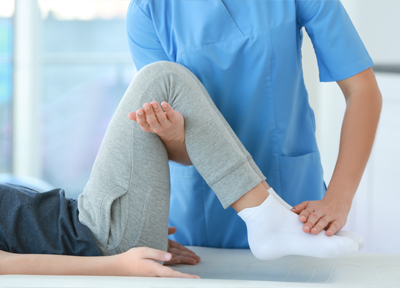
Orthopedic Therapy
Orthopedic therapy
Orthopedic therapy is a specialization in Physiotherapy that aims at improving weakened and injured components in the musculoskeletal system eg: Joints, bones, muscles, tendons, ligaments, fascia, etc. Orthopedic Therapy is the most widely used in acute, chronic injuries and surgical cases.
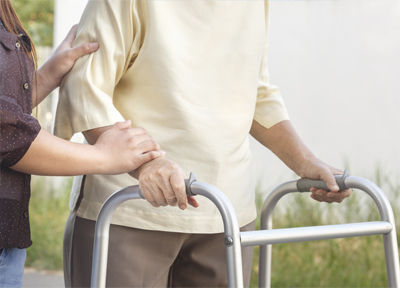
Balance and fall prevention
Balance and fall prevention
Balance and fall prevention is an important part of Physiotherapy that aims at identifying multiple risk factors associated with falls and managing its complications. We assess our patients and their environment that maybe associated with high risk factors and suggest changes and modifications in our patient’s home or office that ensure safety. We work with them to help improve their strength, dynamic balance and proprioception.
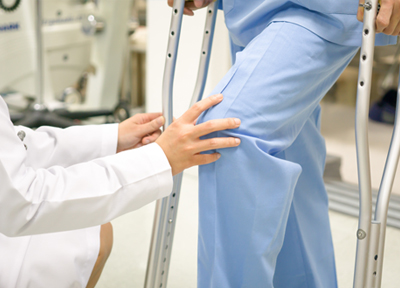
Post Surgical Treatment
Post Surgical Treatment
Post Surgical treatment is a crucial step to recovery after a surgery to help you heal completely and to improve your functional capacity. It is considered as important as the Surgical Procedure itself. It not only helps you recover faster but also helps you with better movement and prevents secondary complications, such as contractures and atrophy. Think of it as re-training the body part to function efficiently with the reduced risk of re-injuring the body part as well as managing your post surgical pain.
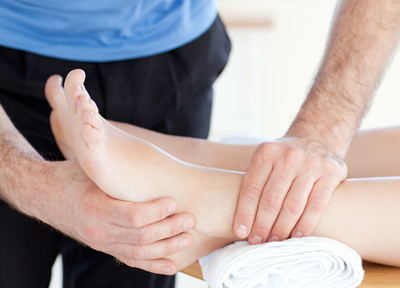
Pre Surgical treatment
Pre surgical treatment
Pre surgical treatment or Prehab is the first step to your recovery. We assess the physical condition and functional limitations of our patients and design a program that best fits their needs. Rehabbing and retraining your body to move correctly can help manage your problem for the most part and the probability of undergoing surgery can potentially reduce. Depending on the extent of your injury if surgery is opted, your recovery will be a lot faster and smoother. Prehab works wonders with all age groups. Best for athletes or someone who wants to avoid or prolong their surgery.
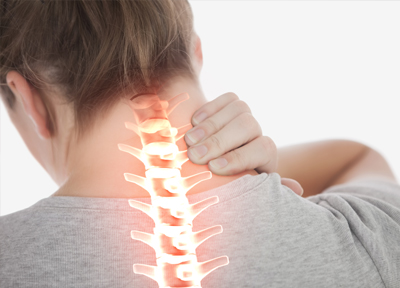
Osteoporosis and Osteopenia Treatment
Osteoporosis and Osteopenia Treatment
Osteoporosis is a condition where the structure of the bones gets weakened which makes a person prone to fractures. Whereas, osteopenia is a condition which is characterized by increased bone loss. Commonly seen in women over 40 years of age and seniors. Research has shown that Physiotherapy and exercises can help reduce the rate of bone loss and improve bone strength. Physiotherapy also improves muscle strength, balance and flexibility which helps prevent falls and lowers the risk of fractures
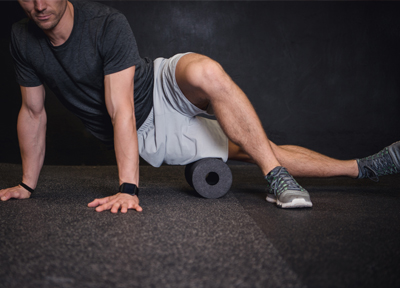
sports rehab and conditioning
sports rehab and conditioning
Sports rehab is an important step for an athlete or a sports professional for getting back to their desired sports. Without this there will be a high chance of recurrent and re-injuries. Sports rehab and conditioning offers a comprehensive approach at fixing the root cause of the athlete and then conditioning them with their sports specific drills which is supervised and is offered in clinic and on-field. This helps provide real time feedback and corrections.
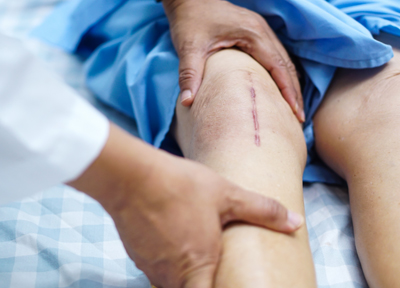
Total joint replacement rehab
Total joint replacement rehab
Opting for a Joint replacement surgery is a major decision. It helps improve chronic pain, improved quality of life and helps you get through daily activities independently. In order to get all these benefits after a surgery, it is very important to undergo Physiotherapy and rehab after a joint replacement surgery since it helps manage secondary complications like contractures, stiffness, pain, weakness loss of balance, etc. Physiotherapy and Rehab are key components to recovery after a Joint replacement surgery since it helps with the best possible outcome after surgery.
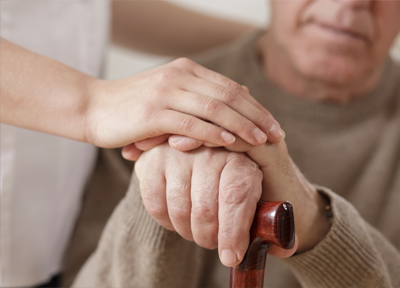
Parkinson’s management
Parkinson’s management
Parkinson’s is a progressive neurological disease that affects the the entire body in different ways eg: decreased coordination, increased weakness, loss of balance, muscle rigidity, postural changes, gait changes, reduced mobility etc. Physiotherapy helps target all those areas where patients are deficient and it helps work on their body holistically. This helps slow down disease progression by improving muscle strength, lung capacity, posture, balance, lowers fall risk, improves coordination and thereby improves quality of life.
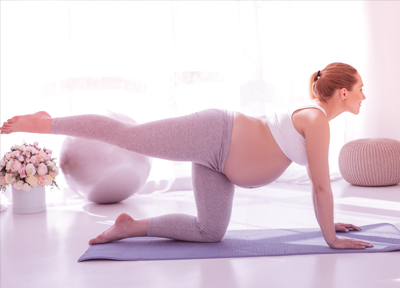
Women’s health and pelvic floor therapy
Women’s health and pelvic floor therapy
A woman‘s body undergoes many changes throughout her lifetime specially during her prenatal, postnatal and menopausal phases. These physical and hormonal changes can give rise to issues like back pain, sacro-iliac joint pain, hip pain, abdominal weakness, pelvic floor pain, sexual dysfunction, uterine prolapse and incontinence. Physiotherapy helps with each of these issues by targeting on focus areas and re-educating the core muscles, other structures and by teaching appropriate coping strategies to manage your condition. Great for moms to be, new moms and for women who have been experiencing physical disturbances related to menopausal changes.
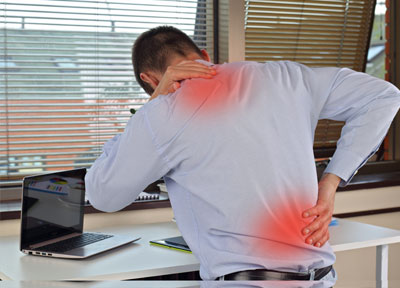
Ergonomic consultation
Ergonomic consultation
Every single activity we do in our daily life has a long term effect on our body if done repeatedly and incorrectly over a prolonged period of time. From the way we sit to the way we type can affect us in more that one ways. If you are someone who has been experiencing random aches and pains and don’t know the reason why, look at your posture, surroundings and the way you conduct yourself throughout the day. Physiotherapy helps you understand what can be done better at home and at work and can help you fix what needs to be fixed and prevent long term side effects. It would be best to get your workplace and home evaluated by our staff.
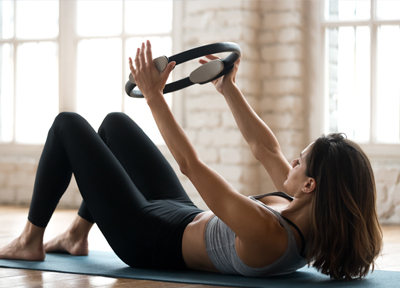
Pilates and Core strengthening
Pilates and Core strengthening
Core is nothing but the center of your body which dictates your stability and strength. There are about 6 muscle groups that form your core. It is believed that a weak core can give rise to new injuries and an existing injury can further weaken your core. It is very important for the center of your body to be stable, Pilates teaches you how to regain control over it and recruit your core appropriately when needed. You don’t have to be injured to undergo our Pilates and Core strengthening program. Pilates is a low impact exercise for your joints and helps you develop longer leaner muscles. Best for fitness enthusiasts, new moms, seniors, women, men, athletes, pre and post surgical candidates, candidates who are new into fitness and exercise.
Techniques
Mulligan Concept
Mulligan is a joint mobilization technique used for pain relief and to increase mobility for most joints in the body. It was introduced by Brian Mulligan in New Zealand. The technique includes NAGS (natural apophyseal glides), SNAGS (sustained natural apophyseal glides) and MWM (mobilization with movement). It aims at corrective repositioning of the joints which is pain-free especially during movements.
Blood flow restriction therapy
Blood Flow Restriction therapy (BFR) is a technique that lets to reap the benefits of high intensity training with lower intensity of exercises. Research proves that BFR improves muscle strength and helps with muscle hypertrophy in post surgical patients and patients which chronic pain where high intensity exercises are not possible due to precautions and clinical setting restrictions. Candidates are thoroughly evaluated which includes noting the limb occlusion pressure with the help of a doppler and setting the cuff pressure at a fraction of the LOP depending on the area of placement. Training with BFR increases anaerobic lactate metabolism, increases grown hormones which helps with faster muscle recovery, muscle hypertrophy, increased collagen synthesis which in turn improves muscle strength. Great for tendon and ligament reconstruction candidates.
IASTM
IASTM stands for instrument assisted soft tissue mobilization. Good quality “Instruments“ are typically made up of stainless steel. Their unique design and edges helps locate smallest of soft tissue restrictions in the body that lead to tenderness, trigger points and pain. This allows your physiotherapist to treat the affected area with right amount of pressure. IASTM causes microtrauma in the local tissues which helps increase blood flow locally, this helps with reabsorption and remodeling of scar tissues or fibrosis which develop as a result of contractures, injuries, strains, immobility, surgery, chronic pain, etc
Cupping
Cupping is a form of soft tissue mobilization technique, where the cups are placed around the painful and restricted part in one‘s body for a few minutes to create a suction force throughout different layers of the soft tissue which includes the skin, muscles, fascia and connective tissues. This helps improve lymph and blood flow in areas where pain persists. Pain relief occurs when there is improved blood flow and less restriction in soft tissue to enable free movement.
Dry needling (Trigger point Dry needling)
Trigger point dry needling (TPDN) is an invasive technique that uses a thin filament needle to pierce through the skin and muscles into the trigger points. Trigger points are hyperirritable concentrated zones that are commonly found in the musculoskeletal-skeletal system which are painful on palpation or pressure. Dry needling can stimulate a local twitch response which helps relieve pain. A local twitch response creates a chain of reactions and it reduces the concentration of chemical painful substances in its surroundings. The twitch response helps the taut muscle band to relax which helps manage pain and stiffness.
Joint Mobilizations – The Maitland Concept
The Maitland Concept is a joint mobilization technique used for spinal and peripheral joints which was introduced by Geoffrey Maitland. The concept is widely used by physiotherapists all across the world as a tool for joint treatment and assessment. Key benefits of this concept are pain management and management of joint stiffness and mobility by gliding the affected joints in an oscillating pattern based on the arthrokinematics.
Stott Pilates ®
Pilates is a method of exercise which is centered around 5 basic principles of breathing, pelvic positioning, rib cage placement, scapular positioning and head-cervical placement. Pilates encourages training oneself with appropriate body alignment that follows a particular breath pattern and helps recruit deep stabilizing core muscles or the powerhouse of the body efficiently. Pilates also used to be called “Contrology” which was coined by Joseph Pilates the founder of Pilates method of movement. This method originated in Germany during mid 1900s.Pilates aims at training the individual to perform controlled movements with a flow, precision, control and concentration. It helps improve posture, increase muscle strength and endurance.
Kinesiology Taping
Kinesiology Taping is a technique where a special adhesive stretchable tape is applied in different directions and different tensions to create desired effects. When applied appropriately, KT is believed to help with muscle facilitation in a weak muscle, inhibition in an overactive muscle, pain inhibition, improved blood and lymph flow, reducing swelling and edema. Kinesio taping is commonly seen on athletes.
McConnell Taping
McConnell taping was introduced by Jenny McConnell in Australia. It is a taping technique that uses non stretchable tapes which aims at correcting and offloading faulty bony alignment especially in the knee joint region. This helps with pain relief. This technique is used amongst runners and other sports professionals.
McKenzie Method
McKenzie method is a treatment approach famously practiced all around the world in order to treat the spine. The school of thought is centered around centralization of pain, that means reducing the spreading of pain and containing it closer to the midline. The McKenzie approach was introduced by Robert McKenzie in 1981 in New Zealand. The method believes in evaluating the pain with sustained and recurring movements and treating the Pain with directional preferences.
Conditions
Headaches

Headaches are commonly seen across all genders and age groups. Some common types are tension headaches, migraines, cervicogenic headaches or headaches caused because of other secondary conditions. A physiotherapist would typically evaluate you and determine the type of headache and if it is treatable by physiotherapy. Headaches are improved with the right exercises and hands on manual techniques. It helps improve quality of life, improved sleep, increased neck motion, decreased need for medication and reduction in headache frequency and intensity.
Possible reasons for Heachaches
Trauma to the back of the head, Stress, Neck tension or tight neck muscles, Osteoarthritis,Tumors in the neck, Cervical disc disease, Poor posture, Infection, Gout, Diabetes, Alterations in sleep schedule, Lack of sleep, etc
Hand pain

Hand pain can occur due to multiple reasons which can prevent you from simple day to day activities. Symptoms can start suddenly or may develop after a few years post injury/trauma. Symptoms of may include hand weakness, tingling, numbness, pain in the thumb and fingers, pain in the side of the wrist, difficulty gripping / grasping, stiffness and difficulty with movement, etc
Possible reasons for hand pain
De Quervain’s tendinitis (also known as De Quervain’s tendinosis), Rheumatoid arthritis in the hand, Carpal Tunnel Syndrome, Cubital Tunnel Syndrome – Ulnar Nerve Transposition, Dupuytren’s Contracture, Injuries to the extensor or flexor tendon, Wrist tendonitis, Wrist sprain, Fractured bones in the hand, Fractured bones in the finger(s), Cervical radiculopathy, etc
Neck pain

Neck pain is one of the common complaints in most people. Postural changes and lifestyle choices are a common factor for increasing neck pain. A good range of motion in the neck enables proper head and shoulder movement. Neck pain can be caused due to a sudden jerk, improper posture, sports injuries, falls, prolonged sitting and symptoms include pain in the neck and head, difficulty looking to either sides, difficulty tilting the head, upper back pain, pain radiating towards the shoulders, etc
Possible reasons for neck pain
Whiplash, Rheumatoid arthritis, Osteoporosis, Fibromyalgia, Spondylosis, Arthritic changes, Degeneration of cervical discs, Herniated cervical disc, Ruptured or slipped disc, Spinal stenosis, Improper posture, Trauma, Strain/Sprain, etc
Shoulder pain

Shoulder is a joint that anatomically has a lot of mobility but at the cost of its stability. This makes the shoulder joint more prone to injuries. Shoulder pain is commonly seen after sports injuries, falls, improper weight lifting, age related changes, falls, etc. Working on the mobility, strength and stability of the shoulder joint, shoulder blade and the mid-back is crucial in attaining complete recovery from pain and injury. Some symptoms are pain when sleeping on the affected side, pain when elevating arm, pain going up towards the neck, difficulty lifting objects, clicking of the shoulder, etc
Possible reasons for shoulder pain
Tendon tear in the shoulder, Tendon inflammation / degeneration in the shoulder, Bursitis, Tendinitis, Arthritis, Instability in the shoulder, Fracture or broken bone, Impingement, Frozen shoulder, Labral tear, Shoulder dislocation, etc
Elbow pain

Elbow, forearm and arm pain is very commonly seen with sports injuries, trauma, as a result of repetitive movements and overuse injuries. Some common symptoms that include are arm redness, stiffness, swelling, tingling, numbness, sharp pain, muscle weakness, pain with gripping / grasping, etc
Possible reasons for elbow/arm pain
Radiculopathy (Pinched nerves), Nerve damage in the arm, Arm sprains, Elbow tendonitis, Wrist Tendonitis, Rotator cuff injury, Fractures, Rheumatoid arthritis, Torn tendon, Biceps rupture, Golfer’s elbow, Tennis elbow, Little League Elbow, etc
Hip pain

Hip pain can be caused due to a number of reasons and can be debilitating since most movements of the spine and legs involve movement at the hips. True hip pain is noted around the groin, pain other than the groin region could be streaming in from the SI joint, other parts of the the pelvis and the lumbar spine. Hip fractures, another major cause are commonly seen is elders post falls. Some symptoms of hip pain include groin pain, reduced range of motion, limping, pain with prolonged sitting, pain while laying on your side, difficulty walking up and down the stairs, etc.
Possible reasons for hip pain
Juvenile rheumatoid arthritis, Osteoarthritis, Psoriatic arthritis, Rheumatoid arthritis, Septic arthritis, Tendinitis, Hip dislocation, Hip fracture, Labral tear in the hip, Bursitis, Inguinal hernia, Pinched nerves, Femoroacetabular Impingement (FAI), Sports hernia, Gluteal muscle tear, etc
Knee pain

Knee pain is one of the commonest complaints across all age groups. Acute and chronic knee pain can potentially hinder your ability to walk, drive, stand, climb stairs and manage other daily functions. Knee pain can occur due to a variety of reasons associated with sports trauma, injuries, lifestyle patterns, age related changes, improper footwear, ankle instability, hip instability and weakness, etc. Some symptoms of knee pain are redness around the knee joint, swelling, weak muscles, stiffness, excess fluid, warmth, etc.
Possible Reasons for knee pain
Patellofemoral stress syndrome, Osteoarthritis, Rheumatoid arthritis, Tendinitis, Bursitis, Dislocated knee, Baker’s cyst, Chondromalacia patella, Meniscus tear, Gout, ACL tear, Torn ligaments, Bone tumors, etc
Foot pain

Feet are literally the base of your body when one attains an upright weight bearing position such as standing or walking. Certain alignments of the foot can make someone more prone to certain injuries and conditions. Proper biomechanics of the foot dictate how the ankle, knees and hips function and vice versa. Foot pain is commonly seen with sports injuries, obesity, improper exercise techniques, flat feet, etc. Some symptoms are pain in arch of foot, pain in toes, heel pain, swollen feet, weakened feet, trouble standing, inability to walk up stairs, pain while walking, pain getting out of bed, pain standing up from a seated position, etc
Possible reasons for foot pain
Toe sprain, Bone spurs, Plantar fasciitis, Achilles tendinitis, Avulsion fracture, Broken foot, Broken toe or toes, Stress fractures in the foot, Tendinitis, Bursitis, Gout, Achilles tendon rupture, Haglund’s deformity, Osteoarthritis, Rheumatoid arthritis, Reactive arthritis, Osteomyelitis, Psoriatic arthritis, Raynaud’s disease,etc
Ankle Pain

Ankle pain is commonly seen in athletes and someone who is on their feet all day. Although improper footwear can cause ankle pain; ankle sprains or ”rolled ankles” are a major cause for ankle pain. Once the ankle is sprained/strained, the probability of re-injuring or re-spraining the ankle increases. Physiotherapy can help manage initial onset of the injury and its recurrence. Some symptoms are pain and swelling in the ankle area, throbbing, weak ankle, stiffness in the ankle area, instability in the ankle joint, bruising around the ankle area, inability to bear weight on the ankle, burning pain in ankle, tingling, numbness,etc.
Possible reasons for ankle pain
Sprained ankle, Bruised ankle, Fracture, Achilles tendon rupture, Bursitis, Osteoarthritis, Rheumatoid arthritis, Gout, Stress fracture in the ankle, Tendinitis, Degenerative tendon,etc
Back pain

The spine is a long unit with multiple joints from the base of the skull all the way down into the buttock region. There are many causes for back pain which include muscle and ligament strain, disc herniation, nerve root impingement, fracture etc. Back pain can occur in the upper, middle or lower part of the back and is believed to be as common as the common cold and can be caused by an acute injury, postural changes or a chronic condition. Some symptoms are pain or discomfort in upper back or lower back, stiffness along the spine, sharp aches in the upper back or lower back, soreness in the upper back or lower back, muscle spasms, difficulty maintaining one position, etc. Symptoms of back pain can often be felt in other areas of the body or even radiate to legs.
Possible reasons for back pain
Muscle strain, Fracture, Scoliosis, Herniated disc, Spinal stenosis, Degenerative disc disease, Spondylolisthesis (slipped vertebrae), Osteoporosis, Arthritic changes, Weak core and low back muscles, Poor sitting or standing posture, Facet Joint Syndrome, Sacro-iliac dysfunction, etc.
Leg pain

Leg pain is commonly seen and can be a result of sports injuries, improper techniques of exercising or undergoing physical activities that one is not used to. Leg pain is usually caused as a result of muscle strain. Most of these muscular injuries can be treated by physiotherapy. Leg pain can also be caused due to certain vascular insufficiencies, radiculopathy, crush injuries or compartment syndrome. Some symptoms are pain when stretching or flexing thigh muscles bruising on the leg, leg swelling, weak legs, muscle spasms,etc
Possible reasons for leg pain
Atherosclerosis, Peripheral Vascular Disease, Deep Vein Thrombosis, Sports injuries, Blood clot in leg, Arthritis, Osgood-Schlatter disease, Legg-Calve-Perthes disease, Tendinitis, Gout, Nerve damage in the leg, Muscle cramps (charley horse), Acute leg injury, Slipped disc (herniated disc), Varicose veins, Dehydration, Overuse of leg muscles, Torn leg muscle, Inflamed tendons, Shin splints, etc.
Wrist pain

Wrist is a link between the forearm and the hand and which is why wrist pain is commonly seen with elbow and hand injuries and vice versa. Repetitive motions, excessive upper body weight bearing, improper exercise techniques, sports injuries are some of the most common causes of wrist injuries. Most wrist pain and injuries can be managed by Physiotherapy. Some symptoms may include pain, wrist stiffness, weakness in hands, difficulty gripping, tingling and numbness in hand, elbow and forearm discomfort, etc.
Possible Reasons wrist pain are
Osteoarthritis, Rheumatoid arthritis, Gout, sprains/strain, fracture, tendonitis, carpal tunnel syndrome, cubital tunnel syndrome, elbow fracture, De Quervain’s tendinitis, etc.
